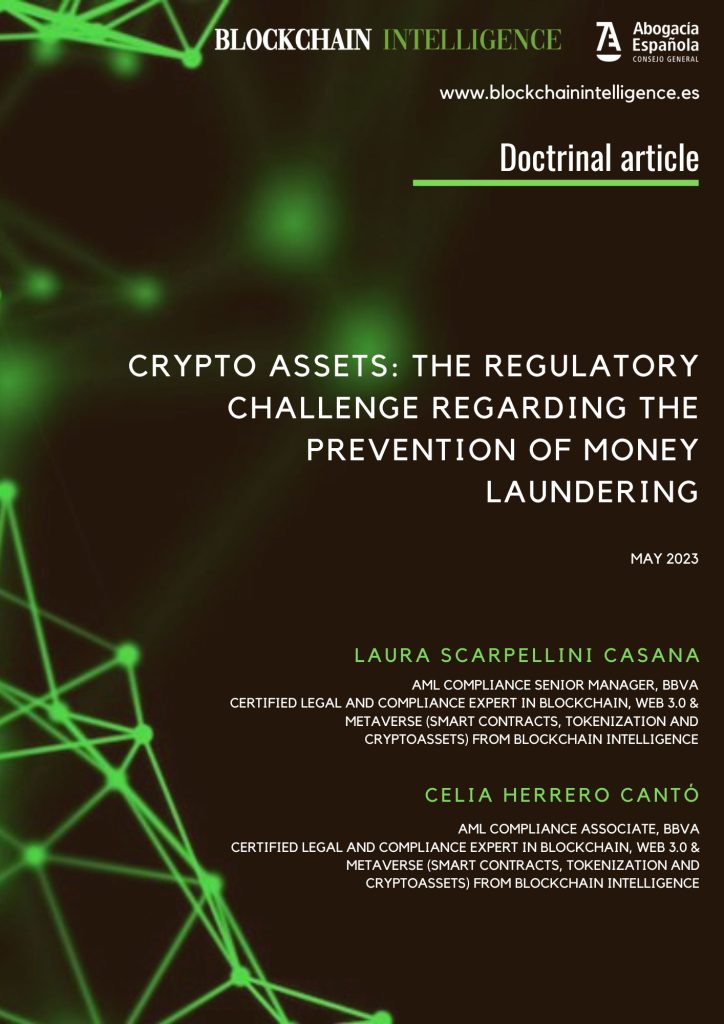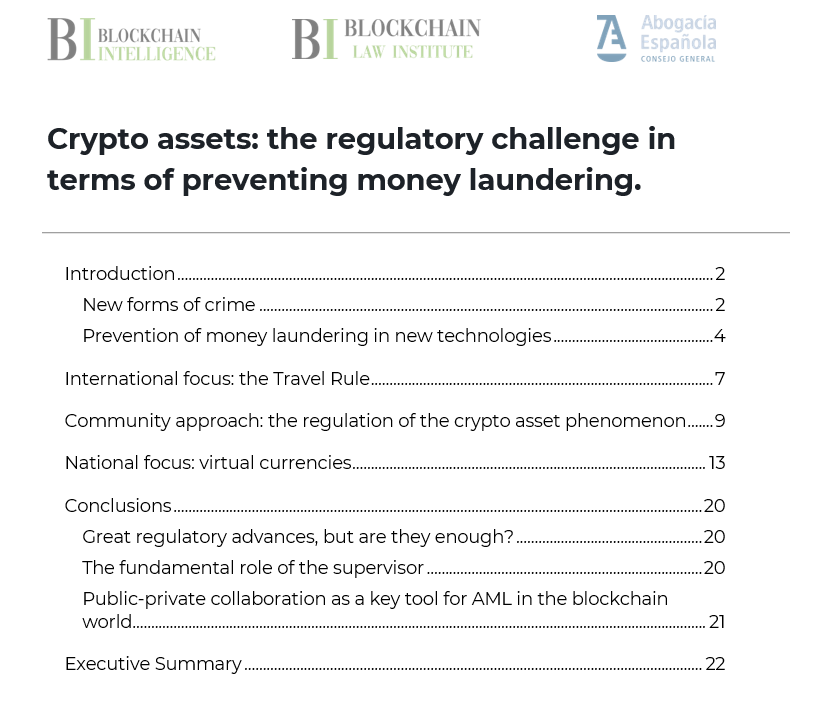
Cryptoassets: the regulatory challenge in terms of preventing money laundering
Authors:
Laura Scarpellini Casana, AML Compliance Senior Manager at BBVA, Certified Legal and Compliance Expert in Blockchain, Web 3.0 & Metaverse (Smart contracts, Tokenization and Cryptoassets) from Blockchain Intelligence.
Celia Herrero Cantó, AML Compliance Associate at BBVA, Certified Legal and Compliance Expert in Blockchain, Web 3.0 & Metaverse (Smart contracts, Tokenization and Cryptoassets) from Blockchain Intelligence.
Date: May 8, 2023

Introduction
New forms of crime
Technology and its evolution are undoubtedly an opportunity. It improves our quality of life, generates new sectors, generally makes our daily lives easier, but it also represents an opportunity and an innovative avenue for crime. In this sense, the crypto assets were not going to be an exception and criminals know how to jump on the bandwagon.
According to Chainalysis, a leading blockchain analysis company, in 2021, $11 billion (approximately €9.7 billion) in crypto assets were in the hands of criminals, mostly based in Russia, Iran and North Korea. This is 266% more than in 2020, having multiplied by more than two and a half in just one year.
Most of these funds, that is, 93%, came from theft by hacking. However, there are other crimes involved such as deep web transactions, scams, fraud, and ransomware . They are also used to evade economic sanctions, or for illicit purposes.
This is greatly aggravated by the slow pace of legislative processes which have taken more months and even years than criminals to understand how crypto assets work and the opportunities and risks they bring. This has caused a legislative vacuum that gave a competitive advantage to criminal groups.


